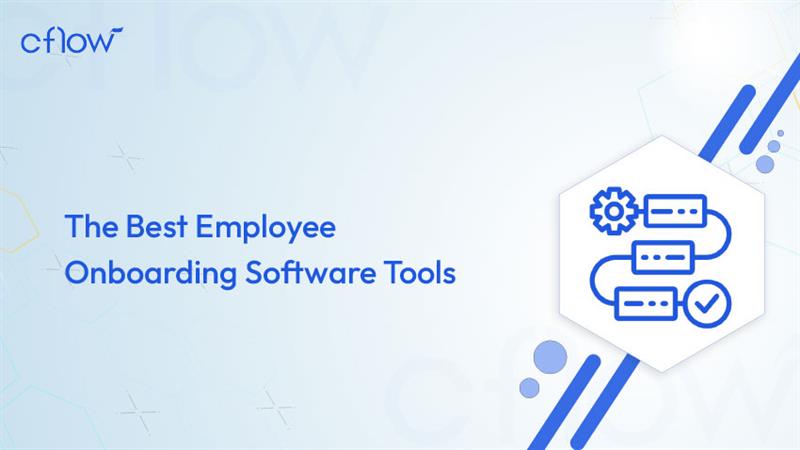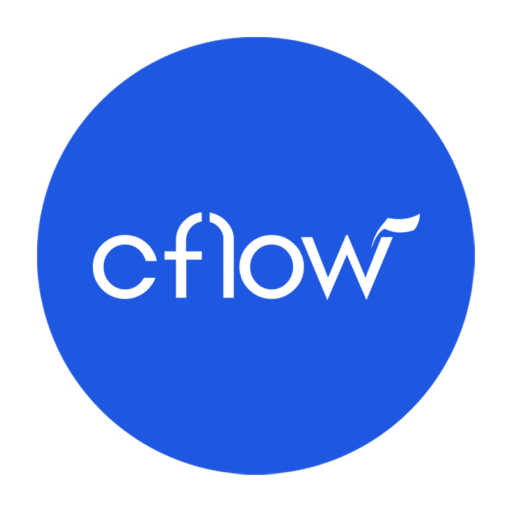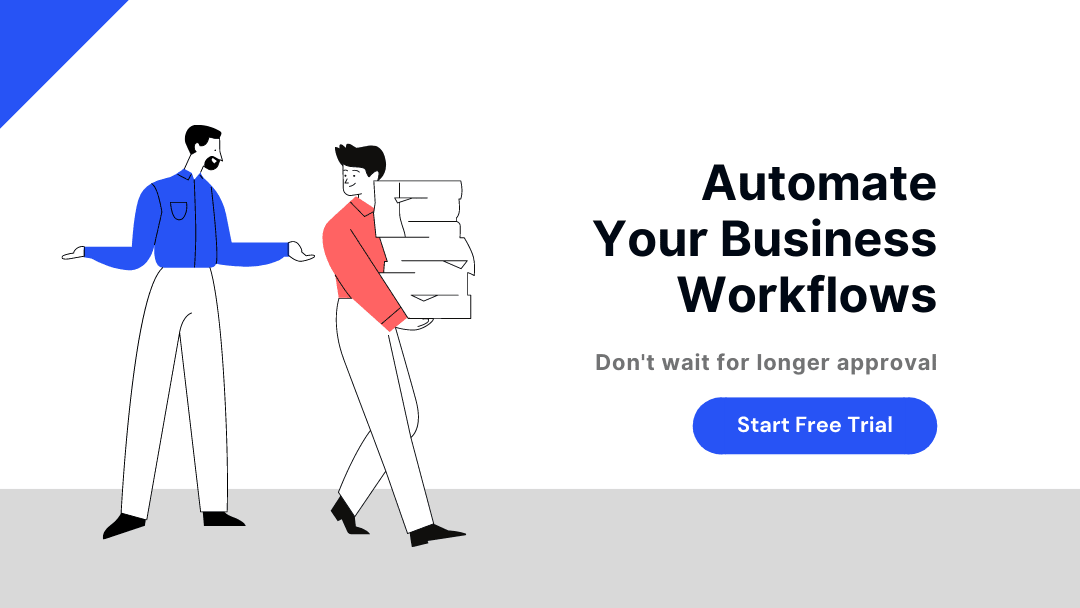Quick and Efficient Onboarding with Employee Onboarding Software


Cflow Team
Share this Content
Key takeaways
A strong onboarding process can boost employee retention by 82% and productivity by 70%, according to Brandon Hall Group.
Onboarding goes beyond orientation; it’s a months-long journey to integrate new hires into the company culture and workflows fully.
Key steps in onboarding include offer release, pre-joining engagement, first-day experience, training, and quarterly reviews.
Onboarding tools vary from checklists and chatbots to integrated HR systems with workflow automation features.
Workflow automation tools like Cflow simplify repetitive HR tasks, reduce paperwork, and accelerate new hire productivity.
Streamlined onboarding builds a stronger company culture, enhances engagement, and reduces first-90-day attrition rates.
Best practices include proactive check-ins, assigning mentors, documenting processes, and tailoring onboarding to individual needs.
Must-have features in onboarding software include ease of use, customisation, data security, integration capabilities, and mobile access.
Top-rated onboarding tools include Cflow, BambooHR, Paycom, UKG Pro, and ADP Workforce Now.
For UK businesses, adopting onboarding automation tools can align HR processes with digital transformation goals and improve overall workforce performance.
Hiring the right talent is only half the job; what truly sets successful UK businesses apart is how they onboard their new employees. As hybrid work becomes standard and employee expectations evolve, more organisations are adopting digital tools to deliver a smoother, more structured onboarding experience.
A well-designed, tech-driven process not only helps new hires feel welcome and confident from day one, but also improves retention and long-term engagement. This guide explores each stage of the onboarding journey, key tools to consider, and proven strategies for UK companies aiming to make every new hire count.
Table of Contents
Employee Onboarding Process Tools
Understanding Employee Onboarding in the UK Workplace
Employee onboarding is the process through which a new employee is transitioned into the organisation.
During this transitional period, the new employee is familiarised with the company’s processes, culture, skills required for the job, and values.
Onboarding vs Orientation
The onboarding process is usually confused with the orientation process.
Both these processes are different, and the variation is based on the scope and timeline.
Orientation is a brief one-time process that lasts a few hours to a few days.
Onboarding is an ongoing process that lasts at least a month.
Both orientation and onboarding focus on familiarising the candidate with the work and the company’s culture.
Onboarding aims at helping a new hire fit into the organisation.
It would be right to say that orientation is part of the onboarding process.
Discover why teams choose Cflow
The Business Case for Proper Onboarding in the UK
Research on the True Cost of a Bad Hire by the Brandon Hall Group reveals:
A positive onboarding process can increase new hire retention by 82%.
It can also improve employee productivity by 70%.
Employee retention is one of the key challenges that companies face today, especially in the UK’s evolving hybrid work landscape.
Despite the obvious importance of the onboarding process, it is often neglected and reduced to a simple first-day orientation.
Incomplete or shortened onboarding lowers the employee’s performance and damages their impression of the company.
How Onboarding Tools Improve HR Efficiency
Using onboarding tools helps streamline the onboarding process.
These tools for new employees also relieve the HR team from mundane tasks.
Even for remote and hybrid roles common in the UK, online recruitment processes can benefit from remote onboarding tools.
Such tools ensure the onboarding process is completed efficiently and consistently across teams and locations.
Steps in the Onboarding Process
Employee onboarding begins from the moment an offer is made to the employee until the time the employee becomes a productive member of the organisation.
The simplest yet most effective employee onboarding tool is a checklist.
The various steps in the onboarding process are listed below:
1. Offer Release
Employee onboarding starts immediately after the recruitment phase.
Once an employee is hired, a welcome email is sent by the HR manager along with useful links like offer letters, digital onboarding forms, and policy documents.
The content of the email must be simple and endearing so that the new joiners gain familiarity with the organisation’s culture and know what to expect from the organisation.
In many UK-based companies, this early communication plays a vital role in setting expectations and showcasing the workplace culture.
2. Offer Acceptance
Once the employee accepts the offer, the HR team will set a review call to discuss forms, benefits, policies, and expectations.
Constant engagement of new hires will affirm their choice to accept the offer and forge strong relationships with the organisation.
The right time to sketch the agenda for employee orientation is after offer acceptance.
UK HR professionals often use this phase to begin relationship-building and reinforce the organisation’s value proposition.
You can get started with Cflow for free
3. Waiting Period
In the majority of cases, there would be a waiting period between offer acceptance and the date of joining.
It is crucial to keep the employee engaged during this waiting period in order to prevent the prospective employee from entertaining other offers.
The HR teams must use the waiting period to build a rapport with the employee by letting them know that they are valued.
Sending emails or calling prospective employees to update them about the status of their offer and sharing information about the company keeps them engaged.
The HR manager can also use the waiting period to plan the onboarding process.
In the UK, proactive engagement during the notice period is especially helpful in reducing last-minute drop-offs.
4. The First Day on the Job
The first day in a new job involves relevant paperwork, allocating necessary software and hardware, and arranging meetings between the new employees and supervisors, and the team.
The HR team must be in touch with the new hire all throughout the onboarding process to supply information or guidance at every step.
Having a checklist of the necessary documents that need to be signed by the new joiner must be completed as a priority.
Most new hires have mixed emotions about the job and company—they are anxious, happy, excited, and nervous on their first day.
Invoking a sense of belonging on the first day is a critical part of the onboarding process.
This emotional support is particularly valued in UK workplaces focused on inclusivity and wellbeing.
5. Team Introduction
It is essential for the new employee to coordinate with other team members and members from other teams as part of their work.
The HR manager must coordinate with key stakeholders and notify them of the start date of the new hire.
The HR staff must enlist the help of the key stakeholders to organise the cubicle of the new employee, organise welcome meetings, and orientation sessions.
In UK organisations with cross-functional teams, early exposure to various departments fosters collaboration and confidence.
6. Training and Orientation
The new joiner must be given an overview of the organisation’s culture and insight into the company’s goals.
The orientation session introduces the employee to the new team, work processes, and company policies.
Role-based goals and objectives for the next 30 to 90 days are set during the orientation process.
Job-based training is also provided during the orientation step.
UK-based HR leaders often align orientation with compliance training and diversity policies relevant to UK employment standards.
7. First Quarter Review
The first quarter review is an important part of the onboarding process.
The expectations of the organisation and the employee are reviewed during the first quarter to see if they match.
The HR managers discuss the new joiner’s experience at the company and check if this matches their expectations.
The new joiner’s performance is reviewed by discussing it with other team members.
Any concerns from the employee’s perspective or from the organisation’s perspective should be identified and addressed by the HR team.
In the UK, structured 90-day reviews are often linked to probation periods and are key to long-term retention planning.
Try Cflow for free, no credit card needed
Types of Employee Onboarding Tools
There are several employee onboarding tools that organisations have been using. From simple onboarding checklists to workflow automation tools, HR teams use these tools to improve the efficiency of the HR process. The main types of tools used in the onboarding process are listed below:
Checklists –
This is the simplest tool that can be used for almost any business process. A checklist simply lists the tasks in the process. Onboarding checklists are a straightforward way of organising the onboarding process.
Specialised tools –
Specialised onboarding tools are created for the sole purpose of streamlining the employee onboarding process. These tools streamline, automate, and accelerate the onboarding process. Employee onboarding Tool is a specialised tool that can be used by organisations to provide a great onboarding experience for the new joiner.
Free tools –
There are several free tools that can be used to organise and streamline the onboarding process. These free tools offer more flexibility and a variety of options when compared to simple checklists.
Integrated tools –
Integrated tools are all-in-one tools that offer solutions for the whole HR management process. A single integrated tool can be used for several HR processes, like onboarding, payroll, benefits, and time management.
Chatbots –
Using employee onboarding chatbots is a very effective tool to simplify the onboarding process. Chatbots are conversational tools that can guide the new employee throughout the onboarding process. The biggest advantage of using chatbots is that they are available 24/7 to the new joiner to clarify any queries that arise during the onboarding process.
Transform your AI-powered approvals
Benefits of a Streamlined Onboarding Process
Having a streamlined employee onboarding process provides several benefits to the organisation. Here are the main advantages of a properly set employee onboarding process.
Acclimate the employee in the briefest possible period – When a new employee joins the company, apart from teaching them where to park their vehicles or where the best lunch spots are, they need to know exactly what is expected of them. They also need to know whom to approach for their queries, and where to find support from their peers and management team. A clear employee onboarding process allows new employees to understand their roles from day one.
Decreases the time it takes for an employee to become productive – The clearer and streamlined the onboarding process, the quicker the employee will be able to settle down and begin being productive. A confusing and disorganised onboarding process results in the new hire wasting time getting to know the who, what, and how of the organisation. Well-organised onboarding and clear onboarding materials provide all the answers to the new joiner about their work and organisation.
Improves employee engagement – Active engagement of employees ensures that they feel valued by the company. Highly engaged employees are more productive, profitable, and deliver superior quality work. Engagement in this context means that the management team is showing that they value the employee and recognise their talent and commitment to the company. The onboarding is the first look an employee has at the organisation’s structure, work culture, politics, and support with the company.
Improves employee retention – ⅓ of the employee turnover happens during the first 90 days of an employee joining the organisation, which means that the onboarding process needs to be effective. Poorly organised onboarding processes and organisations that leave their employees to fend for themselves pave the way for employee attrition. Moreover, the costs associated with bad hires are very high. In order to improve employee retention rates, it is important to have a streamlined onboarding process. Better employee retention saves thousands of dollars for the company.
Promotes a better company culture – A well-organised onboarding process sets the tone from day one for better employee relations. It helps build a strong work culture and makes the employees feel valued, supported, and appreciated. A well-laid-out onboarding process makes new employees feel welcomed, and existing employees see that the workforce is valued. Unique company values are communicated clearly to new hires.
Going paperless – Automating the onboarding process eliminates the paperwork involved in onboarding. Paperless onboarding brings down human intervention in the onboarding process. The software empowers employees to submit and sign documents digitally. Employee onboarding tools free the HR team from the responsibility of managing paper documents.
Given the benefits of having a well-set onboarding process, the next step is to identify the best way to streamline this process. From the above discussions, it is clear that some of the steps in the onboarding process are labour-intensive and repetitive. Any process that has repetitive and labour-intensive steps is prime for workflow automation. Using workflow automation software, the onboarding workflow can be streamlined and rendered more effective and efficient. Cflow is a workflow automation software that can automate key business workflows within minutes. The easy-to-use visual form builder makes it super easy to build workflows. Workflow automation not only improves the efficiency of workflows but also increases productivity. Including onboarding software solutions in HR, workflows are a great way to ensure optimal performance.
Best Onboarding Practices
To make the onboarding process smooth and effective, there are certain best practices that HR teams can follow. Each organisation has its own business practices and procedures; it can choose the best practices that are relevant to its organisation.
Document onboarding processes –
HR managers cannot reinvent the wheel each time a new hire joins the organisation. Documenting existing onboarding processes and all their supporting resources and checklists, and making the information available to all HR professionals, is the best way to streamline employee onboarding.
Access to the company’s knowledge base –
The new employees are likely to have a lot of questions about the new job. Most of these questions are simple and repetitive. They would like to know about the leave policy, dress code at work, performance evaluation parameters, etc. Instead of making the employee ask different people for the required information, all the documents that help the candidate understand the company’s procedures and policies need to be made accessible to the new joiners. The new joiners must be given access to the knowledge base software and empowered to find answers on their own. A comprehensive knowledge database that covers all the important company policies and procedures is a must-have in the employee onboarding process.
Check in with new hires proactively –
The first few weeks are the most important both for the new joiner and the employer. It is a great opportunity to see if the company is a good fit for the employee and vice versa. In addition to monitoring new employees’ performance, the HR teams also have to make sure employees’ expectations are met.
Optimising the onboarding process –
Adopting technological advancements in the employee onboarding process by using employee onboarding tools is the best way to optimise the onboarding process. Automating the employee onboarding process using workflow automation tools like Cflow optimises the onboarding process. New hire employee onboarding tools eliminate redundant and repetitive steps in the process and make it more efficient. The HR team gets more time to focus on strategic activities rather than mundane admin activities.
Choose a mentor for each new hire –
New employees will have many questions as they get used to the new role and organisation. To gather information on the new role, they need to ask questions to several people. Instead, if the HR team allocates a mentor to the new hire, it becomes easy to adjust to the new role.
Customise the onboarding process –
The pace of the onboarding process must be adjusted according to the skills and competencies of the newcomer. In some cases, it is not appropriate to pile too many responsibilities on the new employee. Treating a new employee as an expert may put undue pressure on him. The onboarding process, therefore, needs to be customised according to the skill level of the candidate.
Do not cut short the onboarding process –
The onboarding process could extend up to a year in some organisations. Despite that, several organisations cut short the onboarding process to a few months, not waiting for the new joiner to completely settle into the role. This is a very common mistake that HR teams commit across organisations. Cutting short the process has several repercussions within the organisation. Continuing the onboarding process until the employee completely settles down is beneficial for the organisation and the new employee as well.
Introduce the new hire to the entire organisation –
Restricting the introduction of the new employee to the team alone is not a good idea. If the candidate is introduced to the team alone, the HR team would need to put in additional effort to facilitate interaction with the rest of the organisation. If you do not go beyond the team during the introduction, you will severely limit the new employee’s understanding of the methods within the organisation. Introducing the candidate to the entire organisation gives them a sense of belonging and helps them look at the bigger picture.
Onboard everyone –
Onboarding is usually thought of as the process of getting the new hire up to speed. In reality, onboarding a new employee impacts everyone on the person’s team. The entire team must be involved in the onboarding process, which makes sure everyone is in the loop during the onboarding process. Involving the entire team also makes them feel valued.
Transform your Workflow with AI fusion
Must-Have Features of Employee Onboarding Tools
Onboarding tools software helps streamline the employee onboarding workflow. Choosing the right software for the onboarding process determines the success of implementation. Here are some must-have features of onboarding tools for new employees.
Ease of use – The tool must be easy to use. The HR team must be able to use the tool without much training. The user interface should be easy to follow by everyone on the HR team.
Customisation – The software must be customizable as per the requirements of the organisation. The automated workflow must accommodate the tasks specific to the onboarding workflow in the organisation. The software must be able to accommodate organisational changes that come with growth.
Data security – The employee data must be handled with utmost confidentiality and security. Data errors or data leaks can prove costly for the organisation. The employee onboarding software must ensure the safety and security of employee data.
Pricing – The software must be worth the investment. The software must be feature-rich and make the onboarding workflow quick and efficient. The more efficient the employee onboarding, the more productive the employee is.
Seamless integration – The onboarding software must be seamlessly integrated with third-party solutions like ERP, payroll systems, and other systems.
Mobility – The onboarding software must be mobile-friendly so that it can be used from anywhere at any time. Such tools empower HR to work from wherever they are.
End-to-end approval workflows – The automation software must enable end-to-end approval workflows. All the repetitive tasks must be effectively automated by the software.
Top 5 Employee Onboarding Tools
The top 5 employee onboarding tools, as per G2- Business Software Reviews, are listed below.
Cflow –
This is rated easiest to easiest-to-use workflow management software. This software helps HR personnel to manage daily tasks like payroll, benefits, talent, and workforce management.
Bamboo HR –
This employee onboarding software is rated as the 5th easiest to use Onboarding software. This is a cloud-based system that is intuitive and affordable for growing companies to streamline their onboarding process.
Paycom –
This software is ranked 8th as the easiest-to-use workforce management software. Paycom equips HR with everything they need from hire to retirement, to manage the entire onboarding process.
UKG Pro –
This is a powerful, global human capital management (HCM) solution that helps HR to manage payroll, service delivery, onboarding, and compensation.
ADP Workforce Now –
This is the only all-in-one cloud-HR solution that adapts to the way you work. This tool helps you manage your workforce and make data-driven decisions.
Conclusion
With the average employee life cycle shortening by the minute, a streamlined employee onboarding program is more essential than ever. A well-organised employee onboarding process turns new hires into valuable team members with a memorable onboarding experience. Employee onboarding tools can be used by HR to accelerate the onboarding process and deliver a superior onboarding experience to the newly joined employee.
A workflow automation software like Cflow enables HR to manage employee onboarding efficiently.
To explore workflow automation features of Cflow, sign up for the free trial today.
Frequently Asked Questions
1. What is the difference between onboarding and orientation?
Orientation is a short-term event (a few days), typically covering basic company information. Onboarding is a long-term process—often spanning months—focused on fully integrating a new hire into the role, culture, and company operations.
2. How long should the employee onboarding process take?
While some companies wrap onboarding in a few weeks, best practice suggests a 90-day to 6-month duration, with some organisations extending support up to a year to ensure full integration and performance alignment.
3. Why is onboarding so critical in UK businesses today?
With increasing remote work and job-switching in the UK market, onboarding helps build early trust, reduce attrition, and improve employee engagement, key for keeping talent in competitive sectors.
4. What are the benefits of using onboarding software like Cflow?
Cflow automates repetitive HR tasks, eliminates paperwork, enables end-to-end workflow approvals, and provides a visual form builder—making it easier for HR teams to manage onboarding efficiently from any location.
5. Can onboarding software integrate with payroll and other HR systems?
Yes. Leading tools like Cflow and ADP Workforce Now offer seamless integration with third-party systems, including payroll, ERP, and time-tracking software, allowing for smoother employee lifecycle management.
6. Is employee onboarding automation suitable for small and mid-sized UK businesses?
Absolutely. Many onboarding tools are scalable and affordable, making them ideal for SMEs looking to modernise HR processes without heavy IT investment.
7. What security features should I look for in onboarding software?
Ensure the tool offers encryption, access controls, audit logs, GDPR compliance, and secure document management. These are essential to protect sensitive employee data in the UK regulatory landscape.
8. Can onboarding tools support remote employees effectively?
Yes. Most modern onboarding tools support digital document signing, video training modules, chatbots, and mobile access—perfect for engaging remote hires across different locations.
9. How does assigning a mentor help in onboarding?
Having a mentor reduces the new hire’s dependency on multiple people for information, speeds up their adjustment period, and builds early relationships within the organisation.
10. Is Cflow compliant with UK data protection laws?
Yes. Cflow adheres to GDPR standards and offers enterprise-grade security features, making it suitable for businesses operating in the UK and EU regions.
Thanks for reading till the end. Here are 3 ways we can help you automate your business: Create workflows with multiple steps, parallel reviewals. auto approvals, public forms,
etc. to save time and cost. Get a 30-min. free consultation with our Workflow expert to optimize
your daily tasks. Explore our workflow automation blogs, ebooks, and other resources to master
workflow automation.What should you do next?

Do better workflow automation with Cflow

Talk to a workflow expert

Get smarter with our workflow resources
Get Your Workflows Automated for Free!

